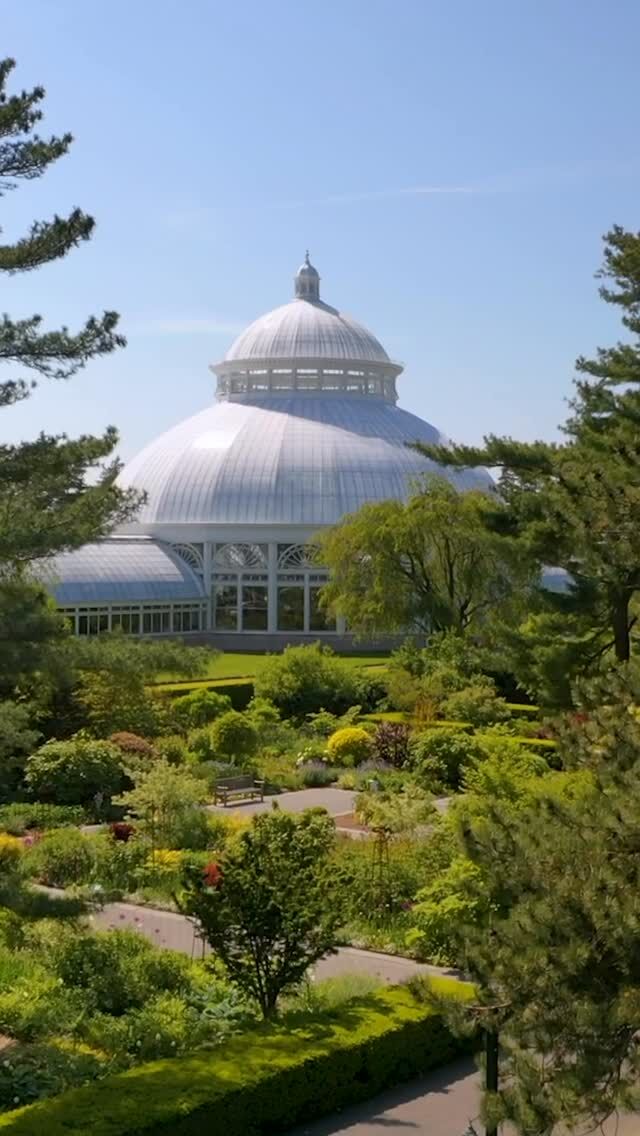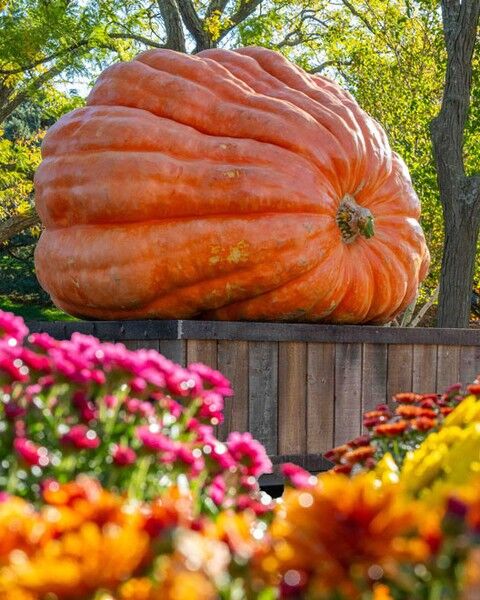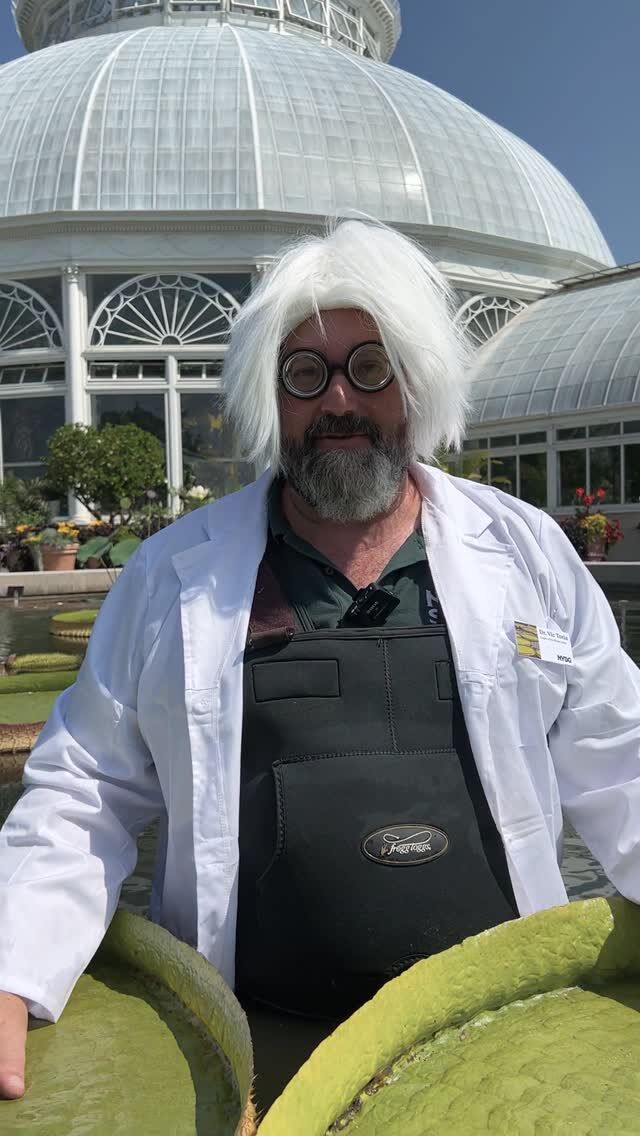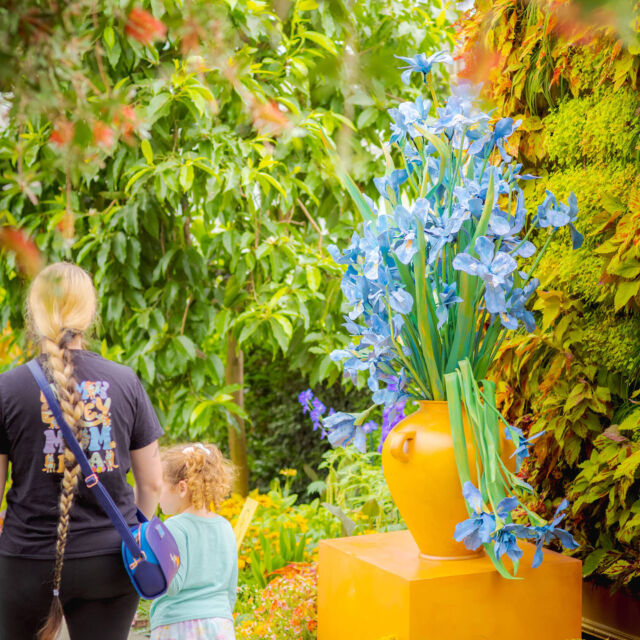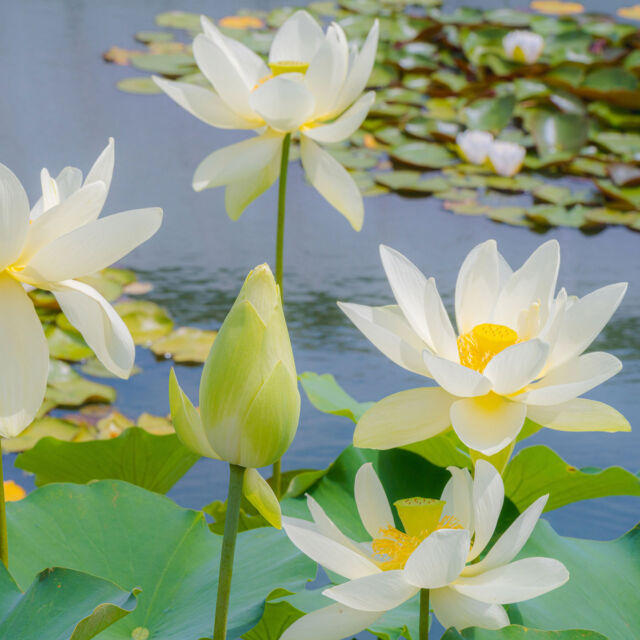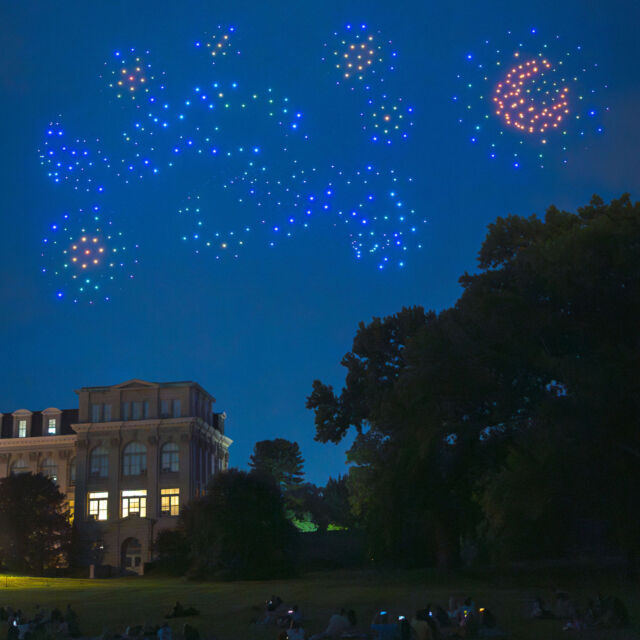Sunflowers of Every Size and Shape
Christopher Elliott is the Associate Curator at the New York Botanical Garden.
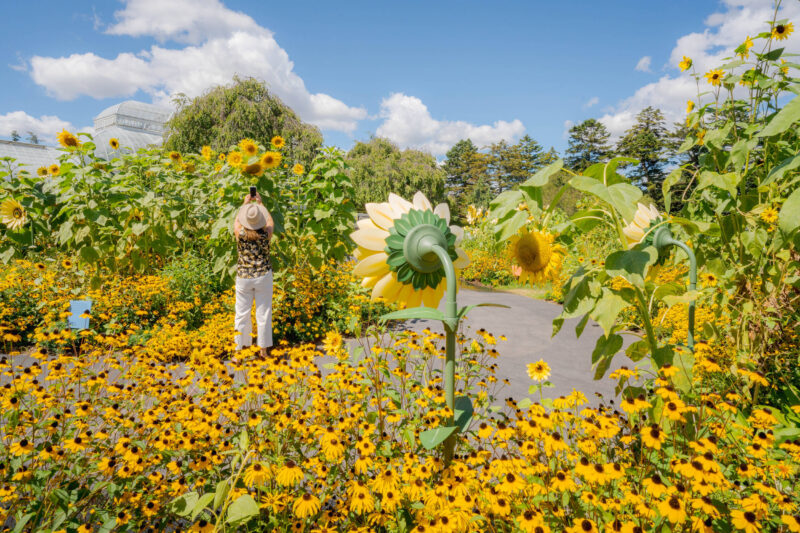
A display of sunflowers as part of the exhibition Van Gogh’s Flowers.
One of the trials in the Pauline Gillespie Gosset Plant Trials Garden, located in the Home Gardening Center, features cultivar selections of perennial sunflowers. These plants are cold hardy, heat resistant, drought tolerant, and reliable perennials—many of which you can see on display during Van Gogh’s Flowers, continuing through October 26. They can be short-lived, depending on the species, but seed freely. Planted in late spring of 2024, we conducted a small trial of readily available Rudbeckia (also known as black-eyed Susan or brown-eyed Susan) and Heliopsis (also known as smooth oxeye or false sunflower) cultivars. Perennial sunflowers are referred to as black-eyed Susan if the plant has a black center of flowers surrounded by golden petaloids. Asteraceous plants are usually deer-resistant due to unappealing leaf texture and better availability of foliage in late spring. Cultivars were selected for eye appeal, flower color, uniqueness, claimed vitality, and disease resistance.
Listed are the trialed cultivars:
Rudbeckia hirta ‘Goldilocks’
Rudbeckia fulgida ‘Viette’s Little Suzy’
Rudbeckia fulgida ‘Goldblitz’
Rudbeckia triloba ‘Blackjack Gold’
Rudbeckia triloba ‘Prairie Glow’
Rudbeckia fulgida ‘American Gold Rush’
Rudbeckia ‘Glitters like Gold’
Rudbeckia fulgida var. sullivantii ‘Goldsturm’
Heliopsis helianthoides var. scabra ‘Burning Hearts’
Heliopsis helianthoides var. scabra ‘Bleeding Hearts’
Heliopsis helianthoides var. scabra ‘Summer Nights’
Heliopsis helianthoides var. scabra ‘Prima Ballerina’
Heliopsis helianthoides ‘Tuscan Sun’
These showy perennials are native to the prairies and plains of North America. The plants selected for this trial are all cultivars. When it comes to the selection of perennial sunflower cultivars, most growers are eyeing flower color, size, blooming period, and resistance to environmental stressors. Flowers are loved by pollinators and are typically golden yellow, sometimes with dark red. If left untrimmed, ripe seed heads stand up beautifully over time, adding winter interest and providing a great source of food for wildlife. These plants were grown in the Garden’s soil, without any additional fertilizer or amendments, which is typically clay-based and sufficiently fertile, located in full sun. The higher-than-average rainfall of late summer coupled with a record-breaking autumn drought should be taken into consideration while deciphering the results of the trial.
Many plants in the aster (Asteraceae) family, a group of plants that contains daisies, sunflowers, goldenrod, and these trialed plants, have a unique flower structure; what we see as one single flower is actually tens to hundreds of individual flowers, surrounded by a ring of petaloids. These are false petals, often called ray florets. Of the true flowers, you can observe the disk florets, a petal-like organ that wraps like a skirt around each flower for pollinator attention. Many are yellow or black, and can change color when they get pollinated. One native aster, Eurybia divaricata, has yellow disk florets that turn purple when pollinated.
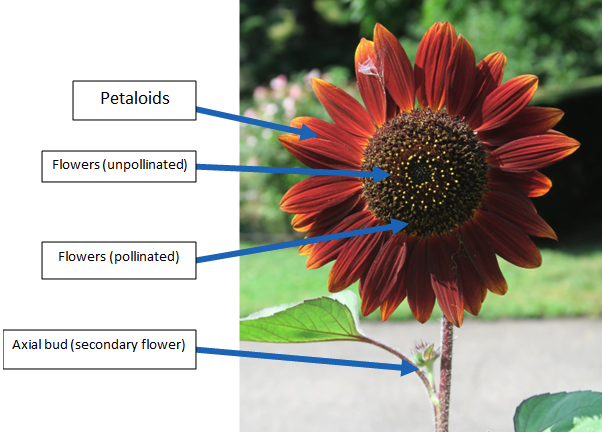
The petaloids attract pollinators by their vibrant colors and UV patterns, which cannot be seen by the human eye. Bees are common pollinators that can see these invisible markings as a “landing strip” that directs them to the pollen and nectar, helping the flower become pollinated to produce seed.
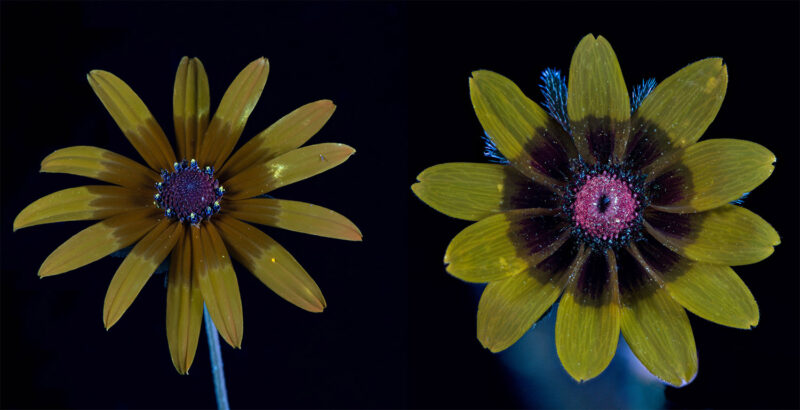
Sunflowers under UV light, displaying guiding markings that are visible to pollinators like bees.
Rudbeckia hirta ‘Goldilocks’ is a short-lived perennial sporting a deep golden yellow flower. Flowers started blooming in mid-August and continued into early October, with individual flowers lasting around two to three weeks. It reaches a maximum height of three feet, but can flop over. This cultivar is extremely floriferous; golden flowers stand tall and separate from foliage, about six inches higher. This cultivar is supposed to be double-flowered, but this trait was inconsistent. In its second year, it was refreshing to see the double-flowering come into effect, with a second ring of petaloids. Many cultivars of plants listed as a “double flower” should be given patience, as some do not show their full effect for a few years after planting. Since ours was seed-grown, there is variability on how expressed the double flowers are. Some Dahlia cultivars would match perfectly with this cultivar and allow for a longer bloom time of similarly looking plants. Large-leafed Coleus in shades of red and purple would be a compatible annual.
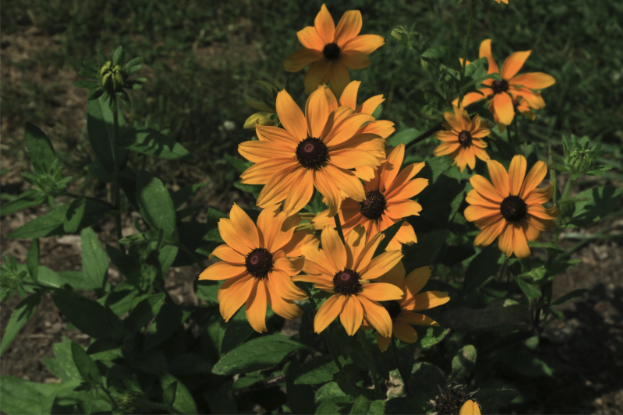
Rudbeckia hirta ‘Goldilocks’
Rudbeckia fulgida ‘Viette’s Little Suzy’ creates a blanket of cheery yellow flowers so dense that leaves are difficult to see. Petaloids are blocky and straight, with a visible eye of darker yellow and an outer ring of nearly white, especially as the flowers age. It has a compact structure, reaching up to 18 inches, and blooms earlier than others, around the end of July. With very clean foliage, the plant stays healthy and green until frost. The flowers can be cut back and made into a leafy ground cover after flower production begins to weaken, since the leaves are so wide and pleated. Pair with a white-flowering, late-blooming perennial like Salvia farinacea to bring out the unique white edging of the petaloids.
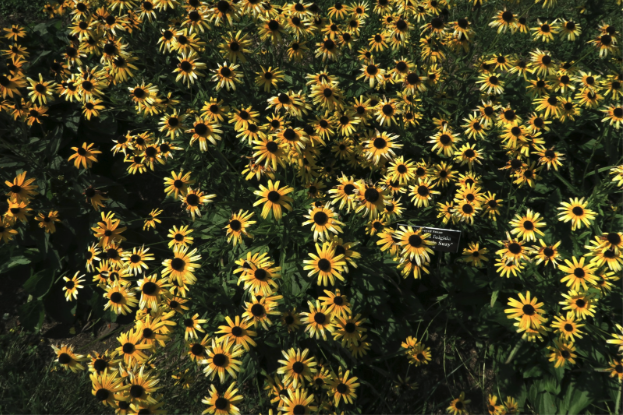
Rudbeckia fulgida ‘Viette’s Little Suzy’
Rudbeckia fulgida var. sullivantii ‘Goldblitz’ is similar to ‘Viette’s Little Suzy’ but doesn’t have the distinctive two-toned ray florets. It is a short-lived perennial but can freely reseed in the right conditions. It reaches around two feet tall. Flowers last very long, and the plant supports a clean, dark green foliage that remains throughout the summer and autumn without any pests or diseases affecting color or health. A wonderful choice for perennial gardens or cottage style landscaping; it is not too neat, but not too wild looking. Trimming flower heads leaves a wonderful mat of large, dark green foliage. A classic Rudbeckia form and color with modern breeding benefits. This cultivar was not impacted by the late summer dry spells. To pair with the looser inflorescences, some new orange and coral-toned Agastache cultivars have been decently successful as short-lived perennials in our climate.

Rudbeckia fulgid var. sullivantii ‘Goldblitz’
Rudbeckia triloba ‘Blackjack Gold’ has tall, slender stems with dainty flowers. Widely lobed golden petaloids that softly darken toward the center of dark brown disk florets. It is a short-lived perennial but can freely reseed in the right conditions. It is a very tall Rudbeckia, reaching around four feet. The plant’s airy structure allows the wind to gently flow through the flowers. Individual inflorescences remain for weeks. Flowering peaks in mid to late summer but holds well through October. A more wild-looking sunflower, it works wonderfully in a native plant or perennial garden style of landscaping. With flower spikes reaching four feet tall, selections of this species add height to the landscape that others trialed do not. Overall, a cute and delicate flower that benefits aesthetics and ecosystem services. To create a prairie-esque cottage garden, pair with late blooming Solidago and asteraceous plants.
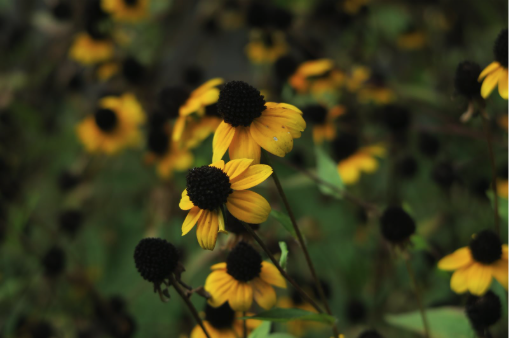
Rudbeckia triloba ‘Blackjack Gold’
Rudbeckia triloba ‘Prairie Glow’ is the same height and form as ‘Blackjack Gold’ but provides a mid-summer show of orange-red petaloids with a yellow highlight at the tips. Its foliage is blue-green, and contrasts beautifully against the flowers. It is a short-lived perennial but can freely reseed in the right conditions. It reaches a maximum height of four feet but is usually shorter. This flower tends to change color over its bloom time, from red to rusty orange. Its seed heads are more ornamental than others, remaining tall and dainty into autumn. It blooms earlier than the other cultivars but also ends earlier. The stems are a luxurious dark purple. These plants were seen completely browned out and done for the year by September while other cultivars were still blooming, but their coloring makes it worthwhile! It should be paired with other plants that can hide it post-bloom, like native grasses and autumn-blooming asters. Some patches of Symphyotrichum species would perfectly take over a Rudbeckia triloba patch, blooming masses of flowers right after these finish. If purple flowers don’t match the landscape, then any mid-sized Solidago species would be a great accompaniment to continue warm-toned blooms. If you have the means to store Dahlia tubers for the winter, then any warm-toned cultivar would be beautiful with these.
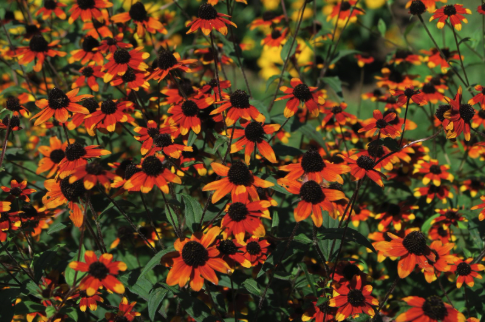
Rudbeckia triloba ‘Prairie Glow’
Rudbeckia ‘American Gold Rush’ was an outstanding cultivar this season. It reaches around two feet tall, perfect for the front of a garden bed, and forms blankets of gold flowers with a light yellow blush at the tips of the petaloids. It blooms constantly from July to October. Individual flowers take a long time to fade, usually several weeks. This is a great choice if you only want one perennial sunflower in your bed. The leaves remain very neat with minimal late-season dulling. This cultivar holds its own, but is friendly with anything of equal height, possibly red Coleus as an annual accent. If your soil is poor and dry, pairing this with a resilient pink-flowering Agastache cultivar would be beautiful.
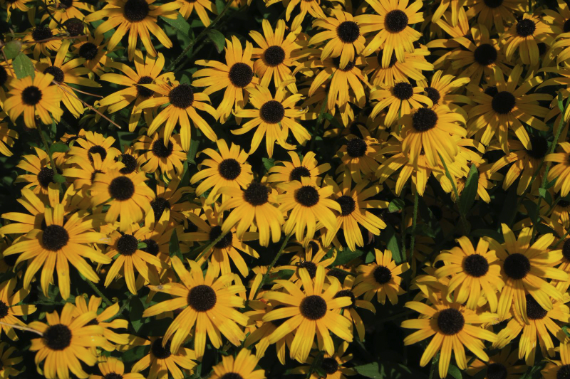
Rudbeckia ‘American Gold Rush’
Rudbeckia fulgida var. sullivantii ’Goldsturm’ is one of the most common sunflowers in the nursery trade, and for good reason. Easy going, drought tolerant, and floriferous plants make them a handy choice in the garden. They reach around two feet tall. Large, dark green leaves stay bold and strong all year, allowing the foliage to take the front of the stage before and after flowering, acting as groundcover throughout the season. Its blooms peaked in late July but continued throughout late summer into early fall. Flowers are borne atop tall, solitary scapes. Not as many flowers arise in comparison to other cultivars, but the foliage is a standout that fills a niche in the landscape that other selections cannot. It is a fabulous reseeder, producing many offspring in a garden bed with no assistance. This would comfortably share space with Echinacea, as it blooms during or before these, leaving colorful flowerheads that barely fade weeks after flowering.

Rudbeckia fulgida var. sullivantii ‘Goldsturm’
Rudbeckia ‘Glitters Like Gold’ performs equally as well as ‘American Gold Rush’, but the blush on the petaloids are more lilac-toned and iridescent. It grows up to three feet tall, with very attractive leftover seed heads after flowers fade, and healthy, large, dark green leaves that don’t fade in late summer. It is very floriferous, creating a mat of blooms all summer. It can be cut back after flowers fade and used as an attractive leafy ground cover. ‘Glitters Like Gold’ is an improved selection of Rudbeckia ‘Goldsturm’ and is resistant to septoria leaf spot disease. Pair it with some Solidago species to lengthen the show of yellow autumn flowers.
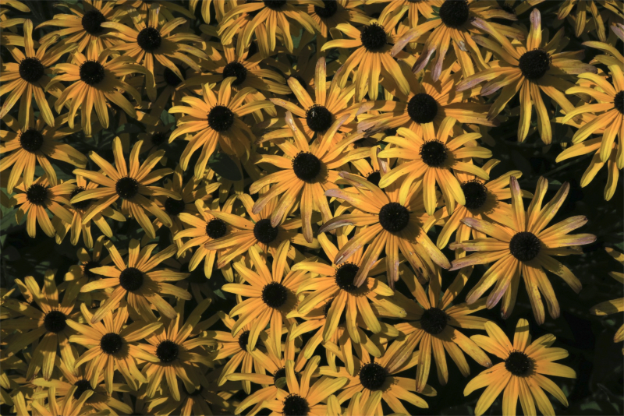
Rudbeckia ‘Glitters Like Gold’
Heliopsis helianthoides var. scabra ‘Burning Hearts’ provides more personality than other cultivars, showcasing deep purple emergent leaves. It grows up to four feet tall but typically flops over. It is a short-lived perennial but can freely reseed in the right conditions. As the leaves mature, they fade to deep green with purple venation. Flowers bloom at varying heights, providing a looser plant that can appear more naturalistic. All cultivars of Heliopsis helianthoides var. scabra appear to work best in the middle of the garden bed, in front of larger shrubs but behind the shorter perennials. Uniquely, the flowers open with canary yellow petaloids and a rusty orange eye. As the flower ages, it fades to pure yellow. It blooms earlier than other perennial sunflowers. This cultivar is a great choice for a gardener looking for an eye-catcher. Surrounding this with other herbaceous foliage that flashes in autumn, like Schizachyrium scoparium and Amsonia hubrichtii will create a wonderful blend.
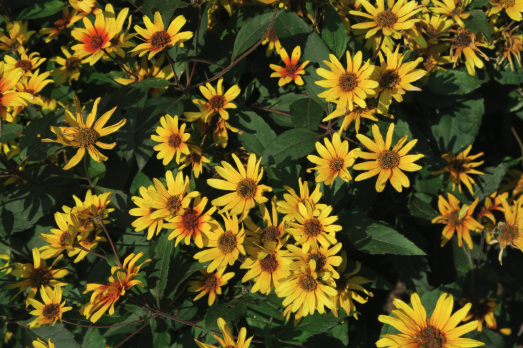
Heliopsis helianthoides var. scabra ‘Burning Hearts’
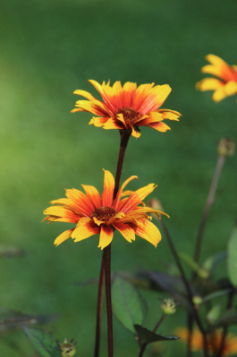
Heliopsis helianthoides var. scabra ‘Burning Hearts’
Heliopsis helianthoides var. scabra ‘Bleeding Hearts’ is very similar to ‘Burning Hearts’ in shape, form, and leaf color. It is a short-lived perennial but can freely reseed in the right conditions. It grows up to four feet tall but typically flops over. Leaves emerge with a purple hue, fading to deep blue-green with purple venation. Stems give way to tall, slender inflorescences with flowers beginning to bloom in June and lasting into autumn. The most appealing part of this plant is its flowers, which open as a striking fiery rust color and fade to a light golden yellow with a halo around the central disk florets. Red and purple cultivars of Echinacea would be a lovely companion to this plant, especially to give height to the landscape. Wispy Agastache inflorescences in shades of coral would be beautiful with this plant.
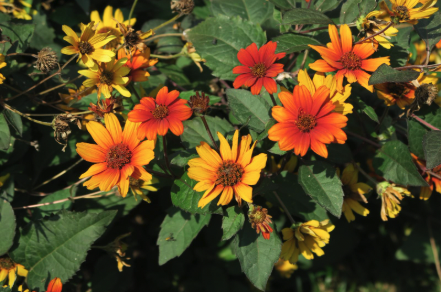
Heliopsis helianthoides var. scabra ‘Bleeding Hearts’
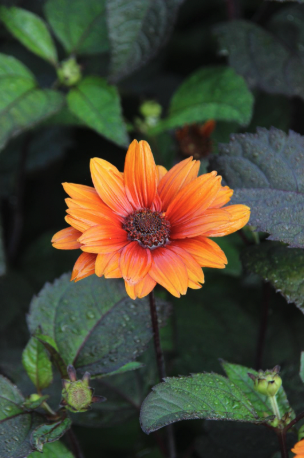
Heliopsis helianthoides var. scabra ‘Bleeding Hearts’
Heliopsis helianthoides var. scabra ‘Summer Nights’ is another selection similar to the ‘Bleeding’ cultivars. It is a short-lived perennial but can freely reseed in the right conditions. It grows tall, around four feet. This choice holds the same leaf color and form but has more yellow flowers with a slight bronze eye that fades to pure yellow over time. It is a highly floriferous plant with early June blooms. The gold flowers are very gentle against the purple leaves and stems, providing a more naturalistic look than the other two ‘Bleeding’ cultivars. Plant it in masses for the best effect, as a single plant is not impactful. This would fare greatly with tall native Solidago, as the flowers stop producing almost exactly when goldenrod begins its September show. Layer with late spring perennials like Nepeta, Agastache, and Salvia cultivars for a captivating late summer garden that thrives in heat.
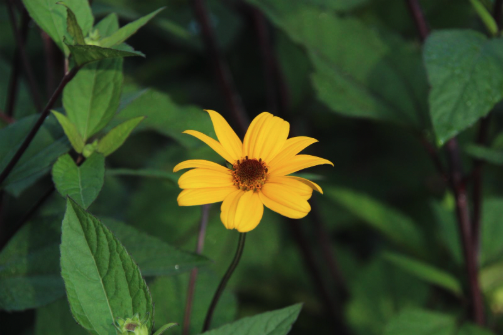
Heliopsis helianthoides var. scabra ‘Summer Nights’

Heliopsis helianthoides var. scabra ‘Summer Nights’
Heliopsis helianthoides var. scabra ‘Prima Ballerina’ has pure yellow, semi-double petaloids that shortly rise above blue-green foliage. It stays short at around two feet tall, and is a short-lived perennial but can freely reseed in the right conditions. With a wilder growth form, this cultivar needs mass planting to be effective. Its visual interest lies in its aging flowers; as the petaloids curl into themselves, it gives the flowers a lacey effect before they drop. Flowers bloom golden and fade to light canary yellow (late flower pictured). The ends of the petaloids are serrated, toothed, wide, and slightly reflexed, giving a nice pillowy appearance. As late summer approached, this cultivar had very crispy foliage that did not last very long post-blooming. It seemed to be the most susceptible cultivar to drought but could be a good addition to a more frequently irrigated garden. Similar plant pairings as ‘Summer Nights’ are recommended for this cultivar.
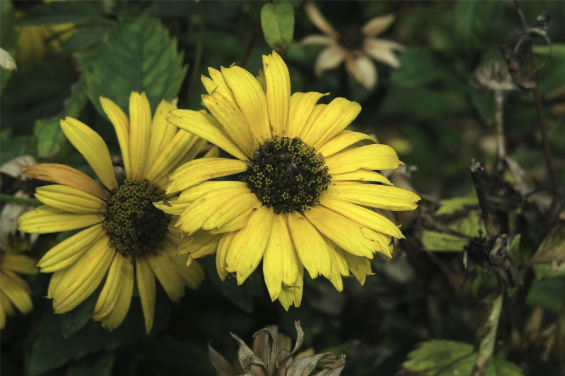
Heliopsis helianthoides var. scabra ‘Prima Ballerina’
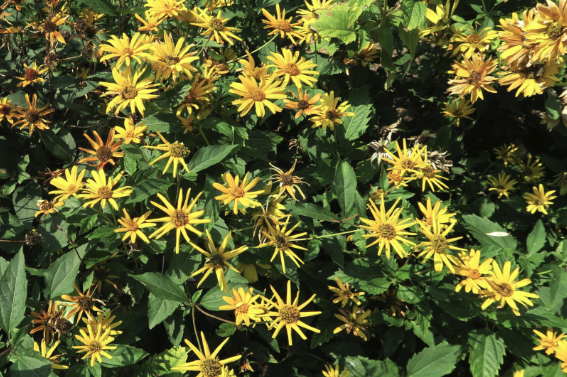
Heliopsis helianthoides var. scabra ‘Prima Ballerina’
Heliopsis helianthoides var. scabra ‘Summer Sun’ is very similar to ‘Prima Ballerina’. Its height reaches three feet. The difference is that foliage is marginally thinner and the disk florets in the center are more golden, while ‘Prima’ is darker. Petaloids are lemon yellow, while ‘Prima’ has more orange undertones. Flowers are the same shape as ‘Prima’ but slightly larger, with occasional split petaloids that look like a snake’s tongue. As with other cultivars, this one was marketed as a semi-double flower, was single the first year, and gained more petaloids the second year. It is a short-lived perennial but can freely reseed in the right conditions. Flowers were long lasting, with individual flowers lasting three weeks and being replaced by new blooms in succession. Foliage becomes crispy past August, especially if late summer is dry. It is a great choice for summer flowers, but should be accompanied by other perennials by September, like goldenrod.
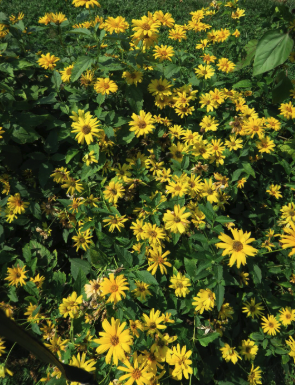
Heliopsis helianthoides var. scabra ‘Summer Sun’
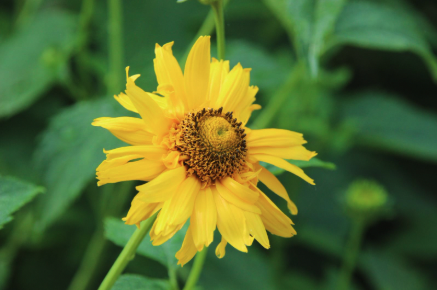
Heliopsis helianthoides var. scabra ‘Summer Sun’
Heliopsis helianthoides ‘Tuscan Sun’ is a compact cultivar that reaches only 15–20 inches tall and wide, making it an easy addition to a garden with restricted space. It is speculated to be the smallest Heliopsis cultivar in existence. It is a short-lived perennial but can freely reseed in the right conditions. It begins to bloom early, around June. A great choice for the front of a sunny garden bed. Its short and wide stature fills a niche that other Heliopsis struggle to satisfy. Short and thin blue-green leaves blend well with other perennials and turf. Seedheads can be unappealing but are wonderful food for wildlife in fall and winter.
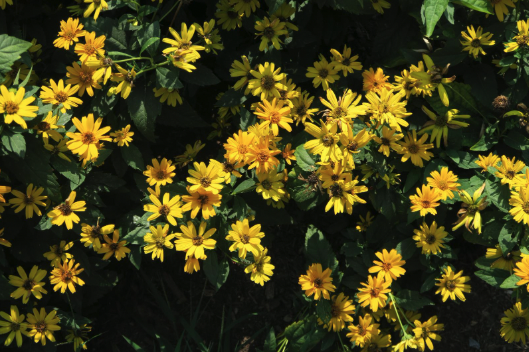
Heliopsis helianthoides ‘Tuscan Sun’
These cultivars make the outdoor plantings of Van Gogh’s Flowers a truly awe-inspiring landscape to explore, and with the right combinations, you can achieve a similar effect in your own home garden.
SUBSCRIBE
Enter your email address to subscribe to this blog and receive updates on new posts.

